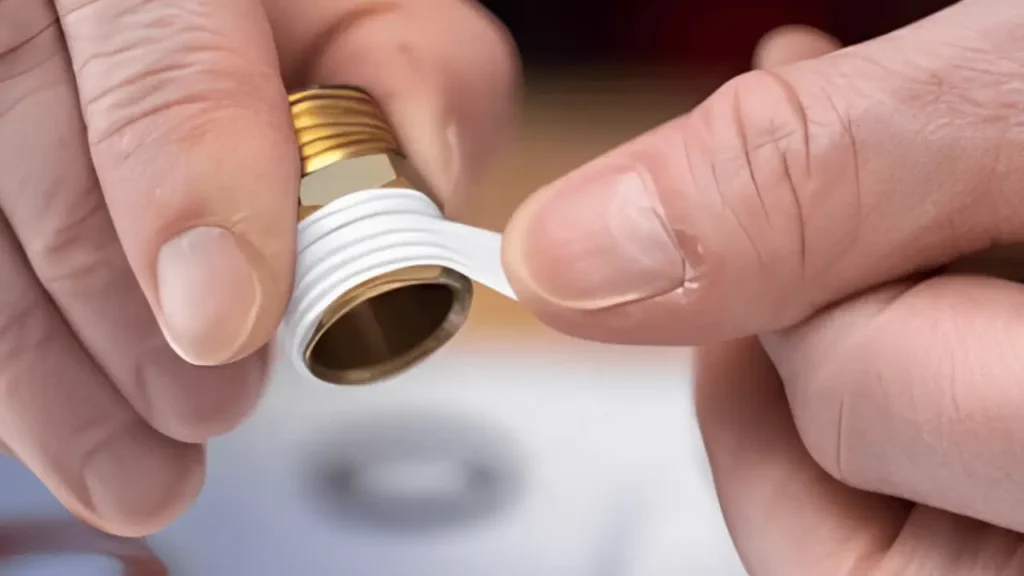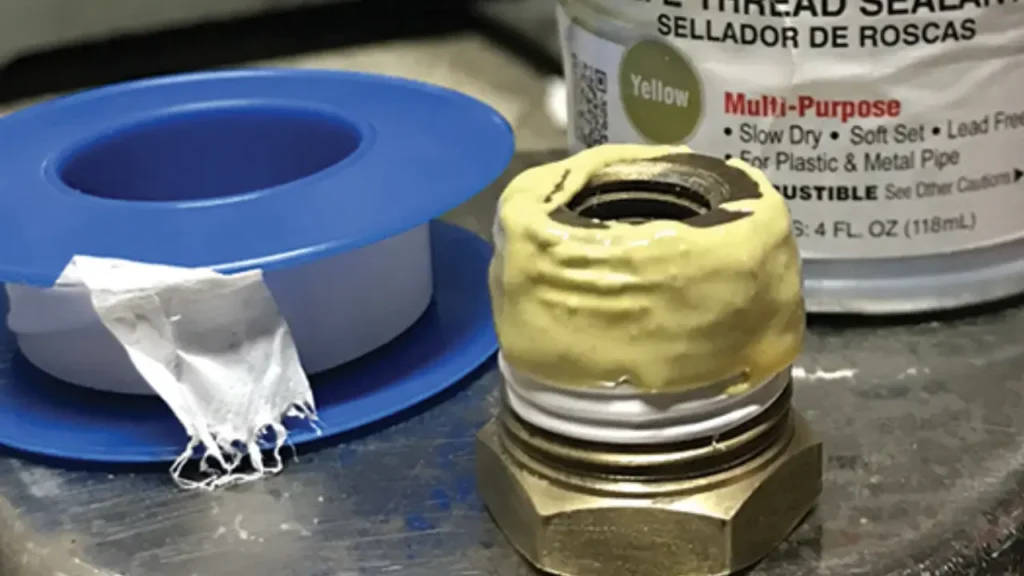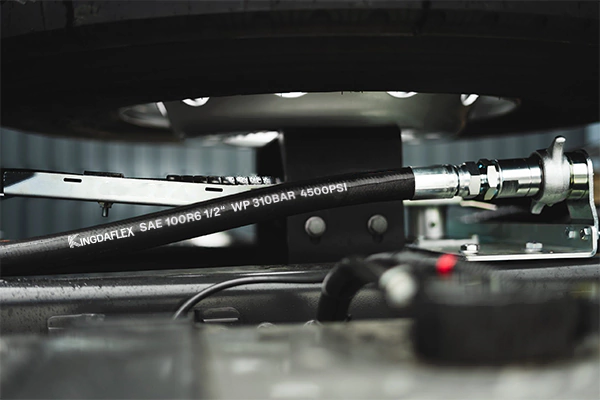National Pipe Taper (NPT) threads are a common type of tapered pipe thread used in various applications. While they are designed to create a seal through their tapered profile, the use of sealant is often recommended.
This blog post will explore the importance of using sealant with NPT threads, discuss different types of sealants, and provide tips for proper application.
We’ll delve into the benefits of using sealant, such as preventing leaks, improving durability, and ensuring a secure connection. By the end of this article, you’ll have a better understanding of when and how to use sealant with NPT threads for optimal performance and longevity.
Do NPT Threads Need Sealant

Yes, NPT (National Pipe Taper) threads generally require the use of sealant to ensure a leak-tight seal.
Here’s why:
- Tapered Design: NPT threads are tapered, meaning they get slightly smaller in diameter as they get longer. This taper creates a tight fit when the threads are joined, but it also leaves microscopic gaps between the threads.
- Sealing Mechanism: Sealants, such as Teflon tape or thread sealant compounds, fill these gaps, creating a barrier against leaks.
Types of Sealants:
- Teflon Tape: A common and easy-to-use option.
- Thread Sealant Compounds: Available in various formulations, including paste and liquid.
Importance of Using Sealant:
- Leak Prevention: Prevents leaks, which can lead to safety hazards, damage to equipment, and energy loss.
- Improved Performance: Ensures proper system function and prevents leaks that could compromise the integrity of the system.
Note: While sealant is generally recommended for NPT connections, some applications may not require it. Always refer to the manufacturer‘s instructions and consult with qualified professionals for specific applications.
Types of NPT Thread Sealant
NPT (National Pipe Taper) threads require a sealant to ensure a leak-proof connection. Here are the two primary types:
1. PTFE Tape (Teflon Tape)
- Appearance: Thin, white or colored tape made of polytetrafluoroethylene.
- Application: Wrapped around the male threads in a consistent direction.
- Pros: Easy to apply, inexpensive, suitable for low-pressure applications.
- Cons: Can unravel if not applied correctly, may not be suitable for high-pressure or high-temperature applications.
2. Pipe Thread Sealant (Pipe Dope)
- Appearance: Thick paste or putty-like substance.
- Application: Applied to the male threads using a brush or putty knife.
- Pros: Provides a stronger seal than PTFE tape, suitable for high-pressure and high-temperature applications.
- Cons: Can be messy to apply, may require more time to cure.
How to Choose NPT Thread Sealant

Choosing the Right NPT Thread Sealant
The choice of NPT thread sealant depends on several factors, including:
Pressure:
- Low-pressure applications: PTFE tape is generally sufficient for low-pressure applications, such as household plumbing.
- High-pressure applications: Pipe dope is typically recommended for high-pressure applications, as it provides a stronger and more reliable seal.
Temperature:
- Normal temperatures: PTFE tape and standard pipe dope are suitable for most normal temperature applications.
- High-temperature applications: Specialized high-temperature sealants are required for applications involving extreme temperatures.
Fluid compatibility:
- Water and common liquids: PTFE tape and most standard pipe dopes are compatible with water and common liquids.
- Chemicals and gases: Some fluids may react with certain sealants. Consult the sealant manufacturer‘s instructions for compatibility information.
Ease of application:
- PTFE tape: Generally easier to apply than pipe dope, but may require more care to ensure proper wrapping.
- Pipe dope: Can be messier to apply but often provides a more reliable seal.
Application environment:
- Clean environments: PTFE tape may be preferable in clean environments to minimize mess.
- Less critical environments: Pipe dope may be a suitable choice in less critical environments.
Here’s a quick guide to help you choose:
- For most household plumbing applications: PTFE tape is usually sufficient.
- For high-pressure applications or critical systems: Pipe dope is generally recommended.1
- For applications involving extreme temperatures or specific fluids: Consult the sealant manufacturer‘s instructions for compatibility and suitability.
Always refer to the manufacturer‘s instructions for specific recommendations and safety precautions.
By carefully considering these factors, you can select the appropriate NPT thread sealant to ensure a reliable and leak-free connection.
How to Seal NPT Hydraulic Fittings
NPT (National Pipe Taper) fittings are commonly used in hydraulic systems. Proper sealing is crucial to prevent leaks and ensure system integrity. Here’s a step-by-step guide on how to seal NPT hydraulic fittings:
1. Choose the Right Sealant:
- PTFE Tape (Teflon Tape): Suitable for lower pressure applications. Wrap 2-3 turns of tape clockwise around the male threads.
- Pipe Thread Sealant (Pipe Dope): Ideal for higher pressure applications. Apply a thin, even coat to the male threads.
2. Clean the Threads:
- Remove any dirt, debris, or old sealant residue from both the male and female threads using a clean cloth or brush.
3. Apply the Sealant:
- PTFE Tape: Wrap the tape clockwise around the male threads, ensuring consistent coverage.
- Pipe Dope: Apply a thin, even layer of sealant to the male threads. Avoid excessive application, as it can clog the fitting.
4. Assemble the Fittings:
- Carefully hand-thread the male fitting into the female fitting. Avoid cross-threading.
- Continue tightening by hand until you feel resistance.
5. Tighten the Fittings:
- Use a wrench to tighten the fitting to the manufacturer‘s recommended torque. Over-tightening can damage the threads or the fitting.
6. Check for Leaks:
- Once tightened, inspect the joint for any signs of leakage. If a leak is present, carefully loosen the fitting, reapply sealant, and retighten.
Important Considerations:
- Compatibility: Ensure the chosen sealant is compatible with the hydraulic fluid and operating conditions.
- Safety: Wear appropriate safety gear, such as gloves and safety glasses, when working with hydraulic systems.
- Professional Assistance: If you are unsure about any aspect of the process, consult a qualified hydraulic technician.
By following these steps and using the appropriate sealant, you can ensure a reliable and leak-free seal for your NPT hydraulic fittings.
Would you like to know more about specific types of hydraulic fittings or have other questions about hydraulic systems?
Conclusion
NPT threads, while commonly used, often require the use of sealant to ensure a leak-tight seal. This is due to the tapered nature of the threads, which rely on the sealant to fill the gaps and create a proper seal. Properly sealing NPT connections is crucial for preventing leaks, which can lead to safety hazards, damage to equipment, and energy loss.
Need NPT Fittings?
Contact us today for a free quote on a wide range of NPT fittings, including adapters, elbows, and couplings. Our experienced team can help you select the right fittings for your specific application.




